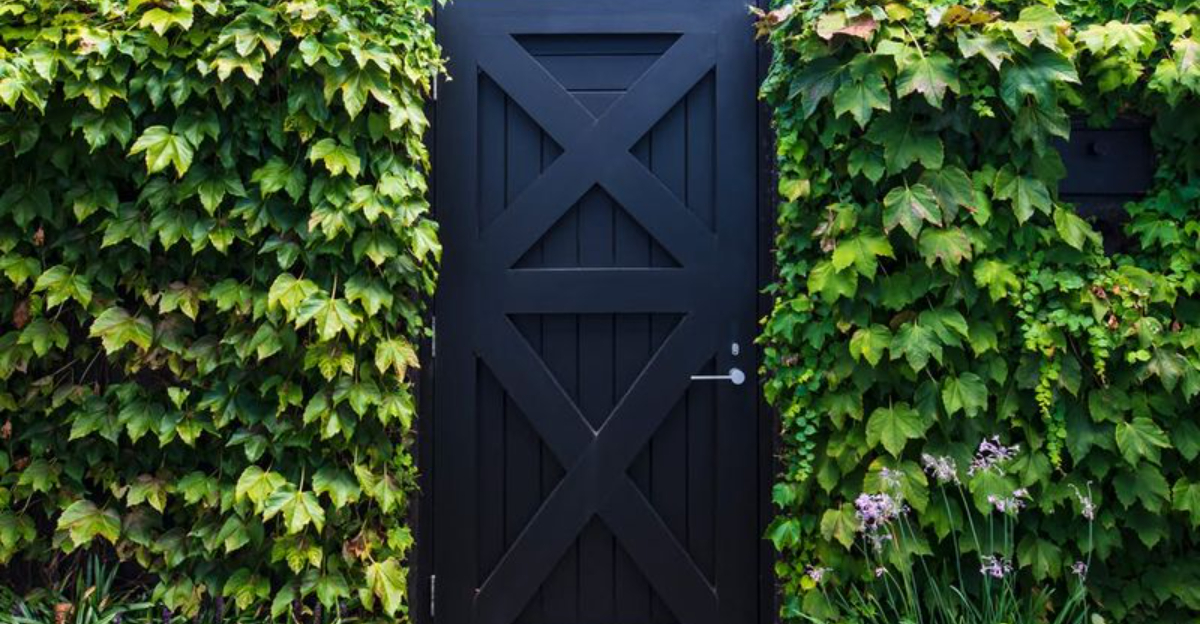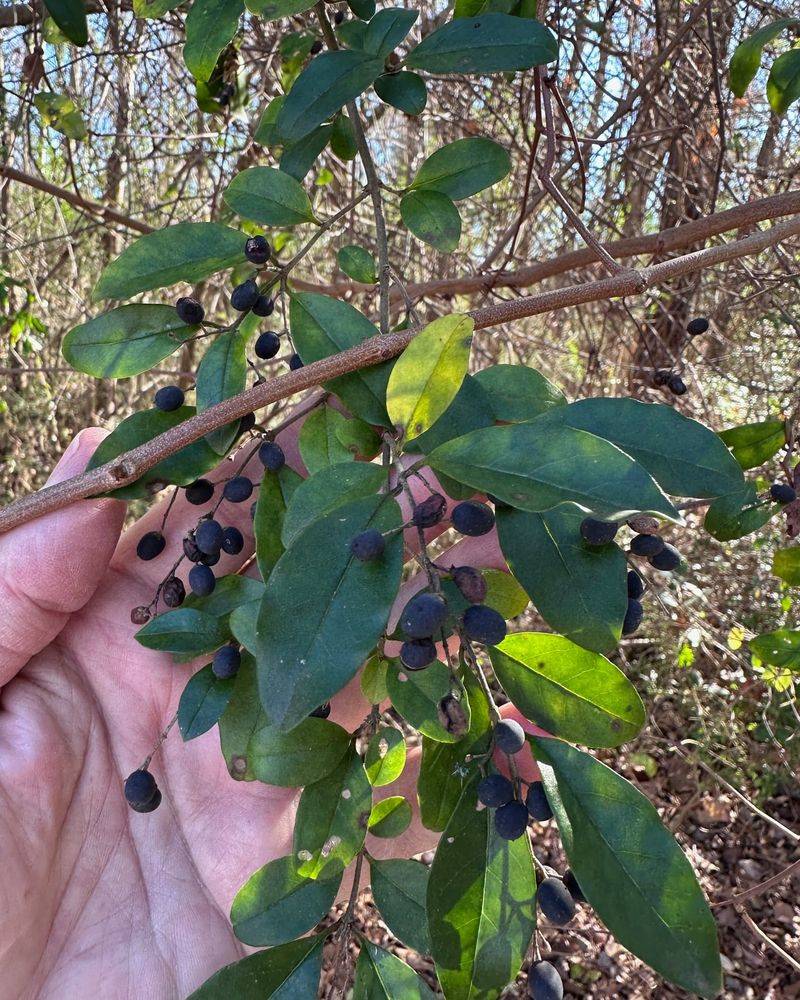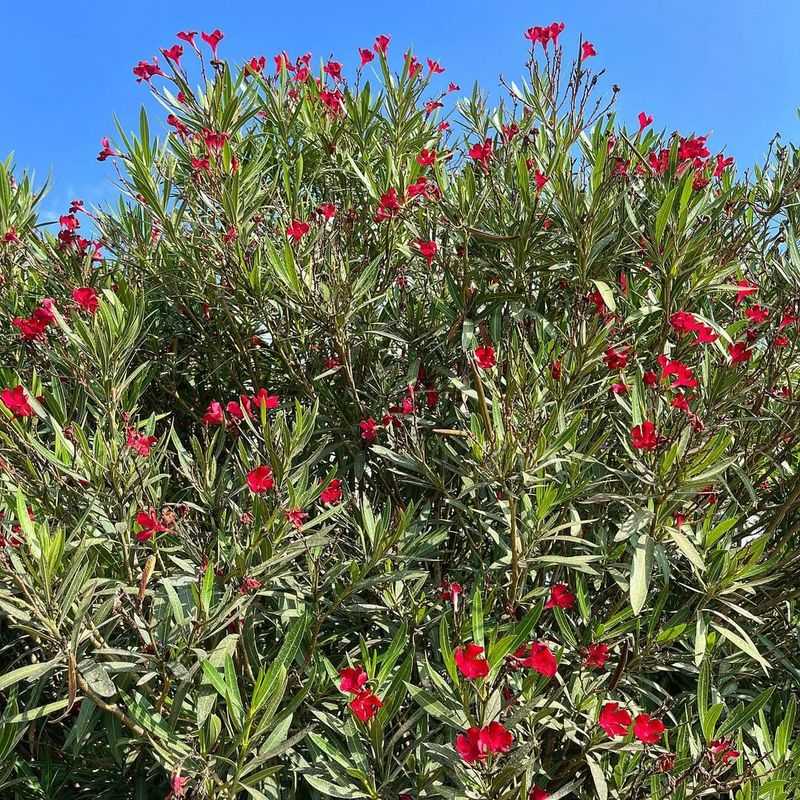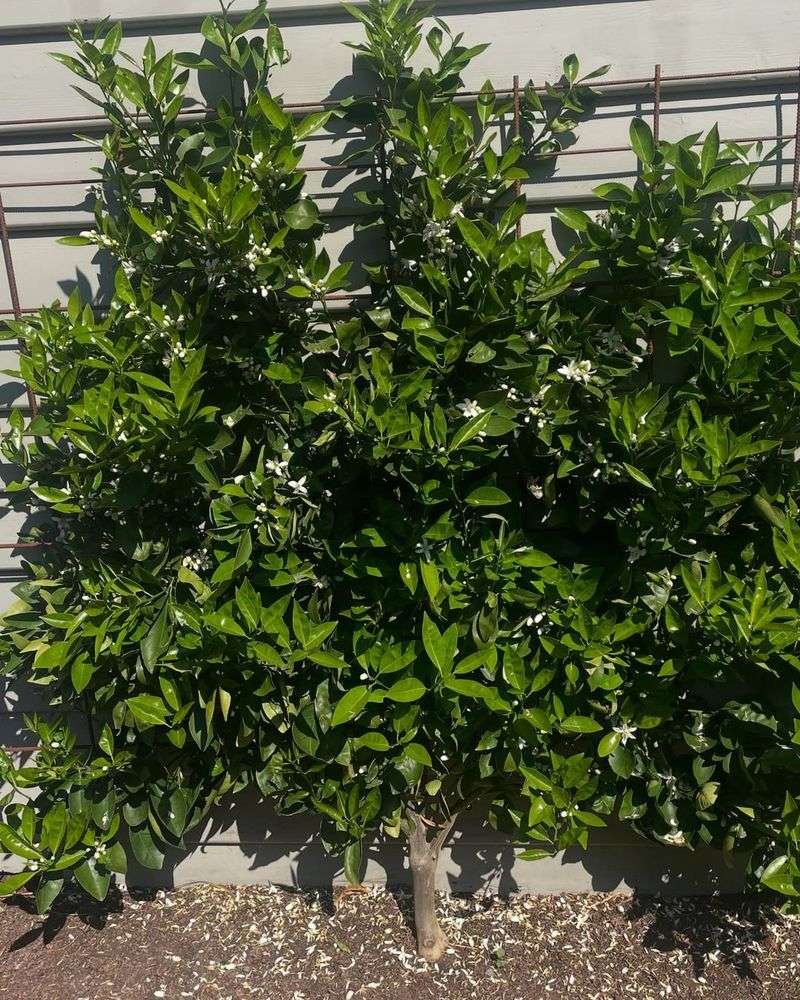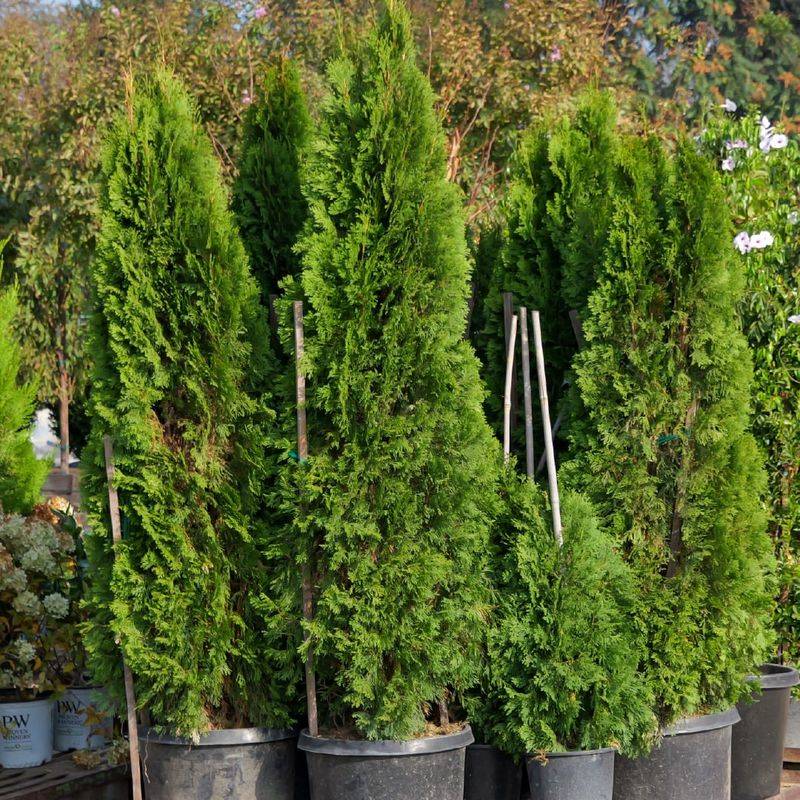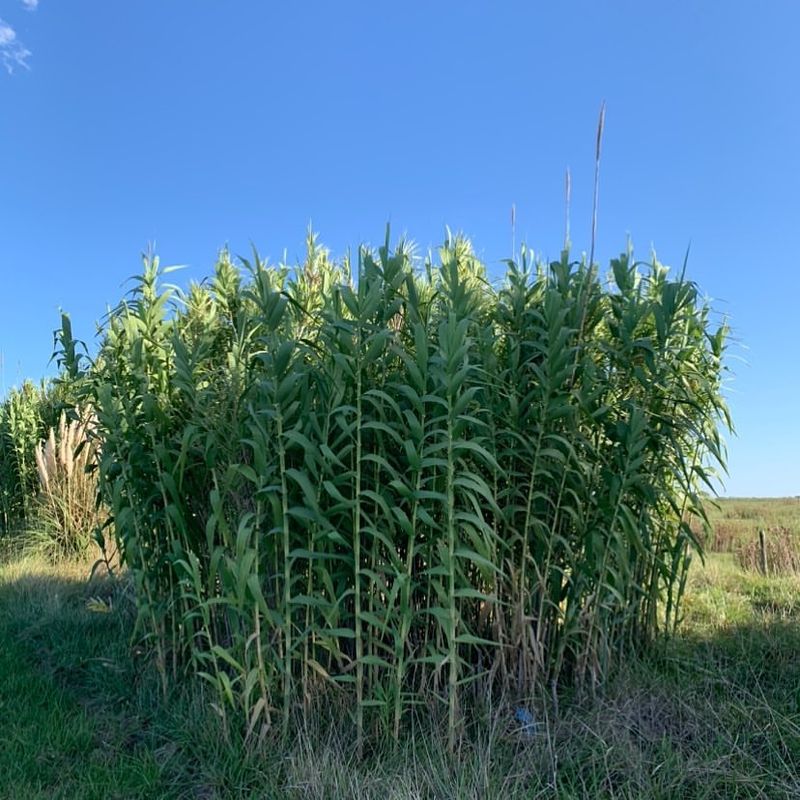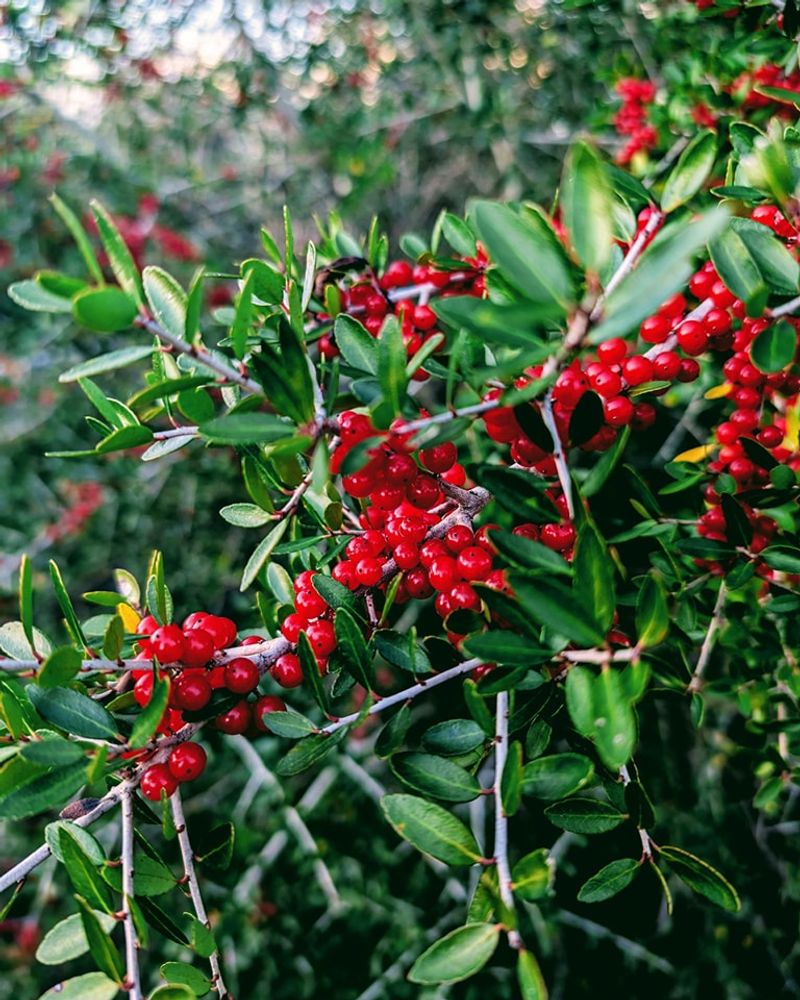Planting hedges right up against your Texas home might seem like an easy way to add privacy or dress up the foundation, but it can create more trouble than it’s worth.
Some shrubs grow faster and wilder than expected, creeping into walls, blocking airflow, and inviting pests to set up shop. Give the wrong plants too little breathing room and they can turn from charming greenery into a headache waiting to happen.
1. Bamboo
Bamboo spreads faster than wildfire across Texas yards, sending underground runners called rhizomes in every direction. Once established, these aggressive roots can crack foundations, invade plumbing lines, and pop up in unexpected places like your neighbor’s yard.
Removing bamboo becomes a nightmare that can take years of constant effort. The roots travel up to 30 feet from the original planting spot, making containment nearly impossible without expensive barriers.
Texas heat only makes bamboo grow more vigorously, turning your simple hedge idea into a full-blown invasion.
2. Chinese Privet
This fast-growing shrub might look perfect for a quick privacy screen, but it comes with hidden dangers. Chinese privet produces berries that birds love to eat, spreading seeds everywhere and creating unwanted seedlings throughout your property.
The dense root system competes aggressively with other plants for water and nutrients. In Texas droughts, this means your lawn and garden suffer while the privet thrives.
Allergies become a real concern too, as privet flowers release pollen that triggers sneezing and respiratory issues in sensitive people during spring blooms.
3. Oleander
Every single part of oleander contains dangerous toxins that can harm children, pets, and even adults who accidentally ingest it. Growing this beautiful but dangerous plant near your home puts your family at unnecessary risk, especially if you have curious kids or dogs.
The smoke from burning oleander branches is equally poisonous, making yard cleanup hazardous. Many Texas homeowners have landed in emergency rooms after unknowingly burning pruned oleander with other yard waste.
Despite its drought tolerance, the safety risks simply outweigh any landscaping benefits.
4. Mulberry Trees
Picture this: purple stains covering your driveway, sidewalks, patio furniture, and even your car. Mulberry trees drop thousands of berries that create a sticky, staining mess throughout late spring and early summer.
Birds feast on these berries and then leave purple droppings all over your home’s exterior, windows, and outdoor living spaces. The constant cleanup becomes exhausting and time-consuming.
Beyond the mess, mulberry roots aggressively seek water sources, potentially damaging your home’s plumbing system and foundation as they grow stronger each year.
5. Pyracantha (Firethorn)
Firethorn earns its intimidating nickname from the incredibly sharp thorns covering every branch. Growing this near doorways, windows, or walkways creates a genuine safety hazard for anyone passing by.
Children playing near the house risk serious puncture wounds that can become infected. Even routine maintenance like trimming or cleaning gutters becomes dangerous when firethorn grows too close to your home.
The thorns easily puncture garden gloves and can cause painful injuries that take weeks to heal properly, making simple yard work a dreaded chore.
6. Leyland Cypress
Leyland cypress might thrive in cooler climates, but Texas heat and humidity turn these trees into disease magnets. Canker diseases quickly spread through closely planted hedges, turning once-green foliage brown and ugly.
The shallow root system makes these tall trees prone to toppling during Texas thunderstorms and high winds. When planted near homes, falling cypress trees can cause catastrophic damage to roofs, walls, and vehicles.
Replacing withered or damaged sections becomes an endless cycle, wasting money and effort on plants poorly suited for Texas conditions.
7. Boston Ivy
Boston ivy looks charming climbing brick walls until you discover the damage hiding underneath. The adhesive rootlets burrow into mortar joints, gradually breaking down the structural integrity of your home’s exterior.
Removing established ivy becomes incredibly difficult and expensive, often requiring professional help to avoid further wall damage. The tendrils leave stubborn marks and residue that can permanently stain brick, stone, and painted surfaces.
Moisture trapped behind the dense foliage creates perfect conditions for mold growth and wood rot on your home’s exterior surfaces and trim.
8. Wisteria
Those gorgeous purple blooms come with a hefty price tag when wisteria grows near your home. The incredibly strong vines can crush gutters, tear down shutters, and rip siding right off your walls with their aggressive growth.
Wisteria roots spread aggressively underground, potentially invading your foundation and plumbing system. The weight of mature vines can damage roof edges and porch supports, requiring costly structural repairs.
Constant pruning becomes mandatory to prevent wisteria from taking over your entire house, making it one of the highest-maintenance landscaping choices possible.
9. Giant Reed (Arundo donax)
Giant reed grows up to 20 feet tall, creating a massive fire hazard when planted near Texas homes. The dried stalks burn extremely hot and fast, potentially spreading flames to your house during wildfire season.
This invasive plant spreads rapidly through underground rhizomes, making it nearly impossible to control once established. The roots can damage foundations, sidewalks, and underground utilities as they expand their territory.
Many Texas counties actually prohibit planting giant reed due to its invasive nature and the ecological damage it causes to native plant communities and waterways.
10. Yaupon Holly
Yaupon holly develops surprisingly aggressive root systems that can infiltrate your home’s foundation and plumbing over time. While native to Texas, planting it too close to structures creates maintenance headaches that last for decades.
The dense growth requires frequent trimming to maintain a neat appearance, and the prickly leaves make pruning an uncomfortable task. Neglected yaupon quickly becomes overgrown and unmanageable.
Birds love the bright red berries, but their droppings create messy stains on siding, windows, and outdoor furniture throughout winter when berries are most abundant.
11. Chinaberry Tree
Chinaberry trees spread like weeds across Texas properties, producing thousands of toxic berries that pose serious risks to children and pets. The aggressive seedlings pop up everywhere, requiring constant removal efforts to prevent a complete takeover.
Roots grow shallow and wide, damaging foundations, driveways, and underground pipes as the tree matures. The weak wood breaks easily during storms, dropping heavy branches that can damage roofs and vehicles.
Many Texas municipalities consider chinaberry an invasive nuisance species and discourage planting it anywhere on residential properties due to ongoing problems it creates.

